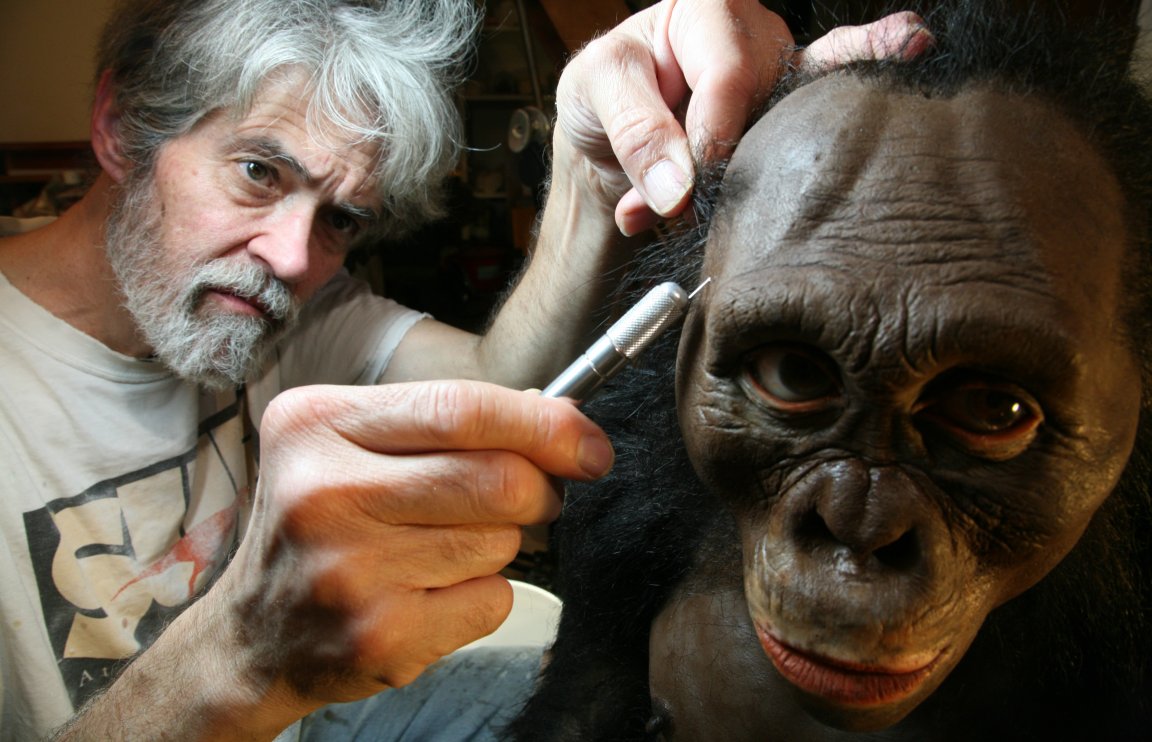
Paleo-artist John Gurche created a 90-second time-lapse video that shows the evolution of the human face. While the video focuses mainly on anlo-sanon heritage, your features may resemble your distant ancestors more than you think.

Faces of Evolution
The first face you’ll see in the video belongs to Sahelanthropus tchadensis, one of the oldest known human ancestors. The species lived between 7 and 6 million years ago in West-Central Africa and had a combination of ape-like and human-like features. Like modern humans, the being walked upright.
Features begin to take on an angular effect as the faces morph into Australopithecus afarensis (AKA Lucy), Homo heidelbergensis, and Homo neanderthalensis. In some ways, many features remain consistent throughout the video. Lips and eyes have similar qualities through species, while other facial structures change drastically.
Reading about evolution is one thing. Seeing it happen before your own makes the history come alive, and helps us better identify with our past. As Yale University Press wrote about Gurche’s book. “Our past is more than just words on a page or the bare bones of a being; it’s a consciousness that we try to tap into for us to enjoy, be inspired by, and learn from for the future.”

Modeling Evolution
Gulche’s models aren’t just imagined art. He works closely with fossilized remains from each species in order to create the most accurate models possible.
“When you’re doing this kind of work, you have to be aware of both the artistic side and the aesthetic side and also the scientific constraints you are operating under … You can’t just make fantasy,” says Gulche.
Rick Potts, a paleoanthropologist and director of the Human Origins Program collaborated with Gurche to create the sculptures. For the most part, Gulches’ sculptures confirm scientific theories. However, Potts says the finished product “can be entirely surprising.”
One of the exhibits Gurche created shows a Homo heidelbergensis crouched behind a bronze fireplace, handing food across the coals of the fire. Beside the fire sits a bronze bench.
“The visitor has to sit down across from the Homo heidelbergensis in order to complete the artwork … to take this offer of shared food,” says Potts. “The visitor becomes part of the piece and that’s a really beautiful moment.”
The models were created in collaborations with the Human Origins Program at the Smithsonian’s Museum of Natural History, and has also released them in a book, Shaping Humanity.